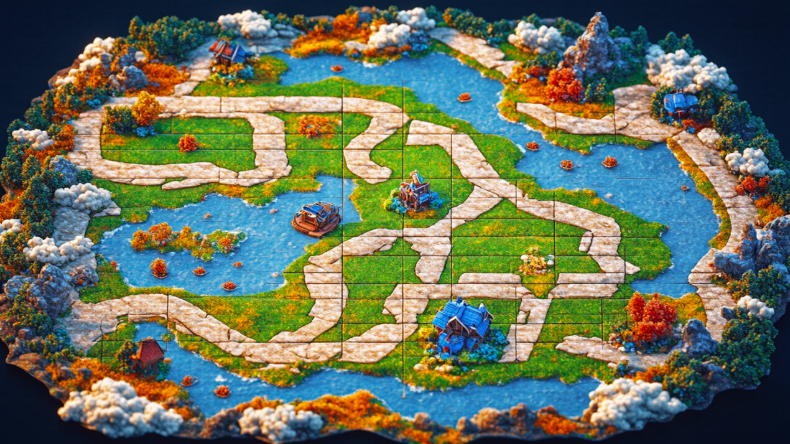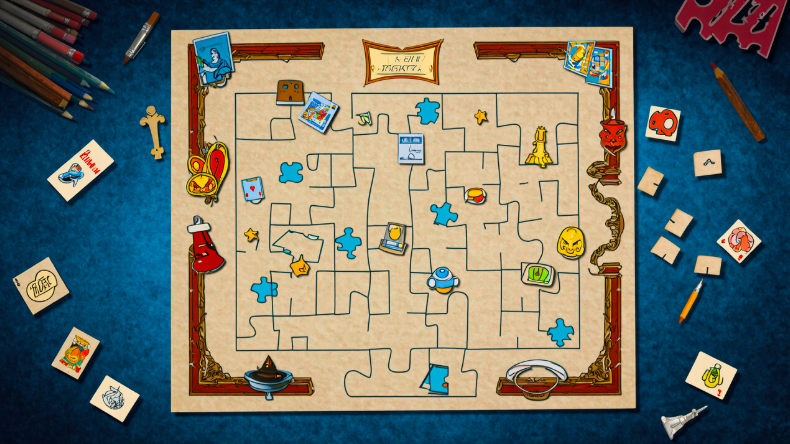Puzzle Design Principles For Better Player Engagement
Learn puzzle design principles that boost player focus, fun, and fairness with clear visuals, themes, and step-by-step difficulty.
Mar 29, 20252K Shares89.3K Views

Puzzle design is the process of creating puzzles that are fun, clear, and challenging. It involves planning how the puzzle works, what the goal is, and how players will interact with it. A well-designed puzzle keeps the solver interested while offering a fair challenge.
Good puzzle design matters because it shapes the whole solving experience. If a puzzle is too easy, it feels boring. If it's too hard or unclear, it becomes frustrating. The best puzzles strike a balance—they are challenging but still make sense. They also give the player a sense of progress and reward.
In this article, you’ll learn the key ideas behind strong puzzle design. From how to keep things clear, to how to make puzzles engaging and test them for improvement, each section will help you understand what makes a puzzle both fun and effective.
Clarity And Simplicity In Puzzle Structure
When a puzzle gives clear directions, players know exactly what they are supposed to do. It removes confusion and helps them focus on solving the problem. If the goal is not clear, players may feel lost or frustrated. Simple instructions save time and make the experience enjoyable.
Simple Layouts Help Players Focus
A clean and simple layout shows only what is needed. It keeps the player’s attention on the puzzle. Too many details or flashy designs can distract or confuse beginners. Good puzzle design avoids unnecessary visual elements.
Avoid Misleading Setups
Misleading puzzles often trick players into thinking the wrong way. This creates confusion and breaks the flow of the game. Beginners may feel frustrated if they waste time on false clues. A good puzzle should challenge the mind, not trick it unfairly.
Reduce Complexity For Better Learning
Overly complex puzzles are hard for new players to understand. Simple setups allow players to learn the rules and mechanics easily. Once they understand the basics, the difficulty can increase step by step. This helps players stay motivated.
Consistency Matters
Keeping the design consistent across puzzles helps players know what to expect. If each puzzle follows a similar structure, players will learn faster. Changing the rules or layout too often makes the puzzle harder to follow.
Balancing Challenge And Accessibility
A good puzzle should be challenging but fair
A well-designed puzzle makes players think, but it doesn’t make them feel stuck or frustrated. The challenge should feel rewarding, not punishing. If a puzzle is too hard, players might quit. If it’s too easy, they’ll lose interest. Fair puzzles give the player all the tools they need to solve the problem.
Designers can control the difficulty
Puzzle designers can adjust how hard a puzzle feels without changing its core idea. They do this by changing how much information they give, how clear the goal is, or how many steps are required. Small tweaks can make a big difference.
Progressive difficulty helps players learn
A good way to balance challenge is by using progressive difficulty. Start with simple puzzles. Let the player learn the rules. Slowly increase the challenge over time. This keeps the player engaged and helps them feel smarter as they play.
Hints can keep puzzles fun
Adding small hints can make puzzles more accessible. These hints should not give away the answer but should guide the player in the right direction. This way, players feel they solved it themselves, even if they got a little help.
Good design avoids frustration
To keep puzzles fair, designers test them with different types of players. This helps find out if any part is too hard or confusing. The goal is to challenge the player, but also respect their time and effort.
Engagement Through Theme And Visual Design
Themes make puzzles more meaningful
A strong theme gives the puzzle a clear identity. When players understand the setting or story behind a puzzle, it feels more connected. A mystery theme, a fantasy world, or a science lab can add purpose to the challenge.
Colors affect player mood
Colors help set the tone. Bright colors can make a puzzle feel fun and light. Darker shades can create tension or focus. A clear color scheme also helps players notice patterns and important details.
Visual design makes puzzles easier to follow
Good design helps players know where to look and what to do. Simple visuals with clear shapes guide attention. Clean layout avoids confusion. Well-placed elements reduce guesswork and make solving smoother.
Art and style add personality
Unique art styles make puzzles stand out. Whether it’s hand-drawn art or digital design, strong visuals give the puzzle character. A puzzle with a fresh look feels more enjoyable and less like a chore.
Storytelling keeps players invested
When a puzzle fits into a story, players care more. A small backstory or goal can add meaning. Players enjoy solving when they feel like they are helping a character or moving the story forward.
Relatable content increases fun
Puzzles that use everyday themes—like cooking, travel, or friendship—connect better with players. Familiar topics make the puzzle feel less abstract and more fun to complete.
Testing And Iteration In Puzzle Creation
Testing with real users is essential
Designers can’t always see what’s confusing in their own puzzles. That’s why testing with players is important. It shows how real users understand and solve the puzzle. This helps find what works and what doesn’t.
Feedback improves clarity
Player feedback shows if the puzzle is easy to understand. If players are confused, the designer can fix unclear parts. Clear puzzles are more fun and less frustrating.
Testing shows the right difficulty
Sometimes a puzzle is harder or easier than planned. Testing helps find the right level. If too many people get stuck, the puzzle might need changes. If everyone solves it too fast, it might need more challenge.
Fun needs testing too
Testing also shows if the puzzle is fun to solve. A puzzle might work well but still feel boring. Watching how players react helps the designer make it more engaging.
Revising is a normal step
No puzzle is perfect on the first try. Good designers test, change, and test again. This process is called iteration. Each version makes the puzzle better. Making changes is not a failure. It’s how great puzzles are made.
Small changes can make a big difference
Even a small tweak—like changing a word or a color—can improve the puzzle. Testing helps find these small changes that improve the experience.
❓FAQs – Puzzle Design Principles
What Are The Core Principles Of Puzzle Design?
The key principles of puzzle design include clarity, fairness, balance, and engagement. A good puzzle should have a clear goal, give all the needed information, and offer a satisfying challenge without being frustrating. It should also keep the player interested through visuals or themes.
Why Is Clarity Important In Puzzle Instructions?
Clear instructions help the player understand what they need to do. If the rules or goals are confusing, the player may give up before trying. Clear instructions make the puzzle feel fair and help the player focus on solving, not guessing what to do.
How Can Designers Balance Difficulty In Puzzles?
Designers balance difficulty by testing with different players and adjusting based on results. They can add small hints, reduce distractions, or break the puzzle into smaller parts. The goal is to keep it challenging but not too hard or too easy.
What Role Does Visual Design Play In Puzzles?
Visual design helps guide the player’s focus and sets the mood. Good visuals can make it easier to spot clues or understand patterns. A clean layout also prevents confusion and makes the puzzle more enjoyable to solve.
How Do Puzzle Creators Test Their Designs?
Creators test puzzles by watching real players solve them. They look for points where players get stuck or confused. Based on this feedback, they make changes and test again. This cycle helps improve the puzzle step by step.
Can A Puzzle Be Too Simple To Be Effective?
Yes, if a puzzle is too simple, it might not hold the player’s interest. While not all puzzles need to be hard, they should still offer a sense of progress or discovery. A puzzle should feel like an achievement, even if it’s short.
What Makes A Puzzle Feel Rewarding To Solve?
A puzzle feels rewarding when the player feels smart after solving it. This happens when the puzzle gives just enough challenge and then offers clear feedback once it’s solved. Good timing, design, and a small “aha” moment make it satisfying.
Do All Puzzles Need A Theme Or Story?
Not all puzzles need a theme, but having one can make them more engaging. A theme or story gives context and helps the player feel more connected. It adds interest and can make the puzzle more memorable.
How Important Is Player Feedback In Puzzle Design?
Player feedback is one of the most important tools in puzzle design. It helps the creator know what works and what doesn’t. Feedback helps fix unclear areas, adjust difficulty, and improve the overall experience for future players.
Are There Tools Or Software For Designing Puzzles?
Yes, many tools help with puzzle design. Some popular ones include Unity, PuzzleScript, and Twine. These platforms let designers build, test, and share puzzles easily. They also support visuals, logic, and interaction for different puzzle types.
Latest Articles
Popular Articles
